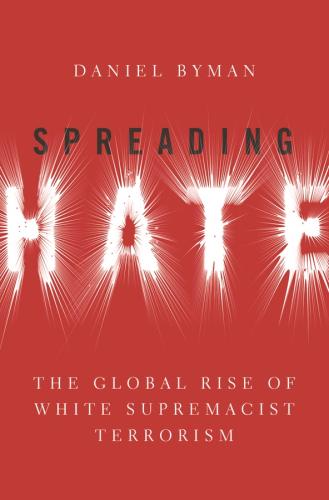Despite alarming headlines, domestic terror attacks left fewer Americans dead than in 2019, writes Daniel L. Byman. This article first appeared in the Washington Post.
In October, the FBI arrested over a dozen men tied to the anti-government “boogaloo” movement and a paramilitary group, the “Wolverine Watchmen.” The men allegedly plotted to kidnap Michigan Gov. Gretchen Whitmer (D), put her on trial or treason for taking tough measures to fight covid-19, and storm the state capitol building to instigate a civil war. The alleged Whitmer plot, along with constant disinformation claiming an election coup, bizarre QAnon conspiracy theories and images of burning cities, seemed to embody the extremism that appears to permeate America today.
Although many Americans are eager to put this year behind them, 2020 also had some surprising bright spots. So far, we’ve seen no foreign jihadist attacks on U.S. soil, and despite the grim headlines, the actual number of deaths from white supremacists and other domestic terrorists is small.
Is 2020 an outlier?
Data from the New America Foundation shows that zero Americans died from jihadist attacks in the United States this year. For 2020 so far, New America tallies eight terrorism deaths on U.S. soil, far fewer than the 30 Americans killed in 2019. Kyle Rittenhouse was charged with killing Black Lives Matter protesters in Kenosha, Wis. Police believe a “men’s rights” activist planned to attack a New Jersey judge and killed her son when he opened the door. In Portland, police killed a self-described anti-fascist as they attempted to arrest him on charges of a member of the group Patriot Prayer.
Of course, 2020 could be an outlier year. Terrorists regularly plot, and sometimes they are caught and sometimes they succeed. Data from the National Consortium for the Study of Terrorism and Responses to Terrorism (START) at the University of Maryland, for example, shows 32, 41 and 43 attacks in the United States for 2000, 2001 and 2002, respectively — roughly similar numbers for each year. In 2000 and 2002, there were zero and four deaths, respectively. In 2001, there were 3,005.
But U.S. policy has also played a role. Since 9/11, the United States has maintained an aggressive campaign against al-Qaeda leadership that became more effective over time. U.S. operations against the Islamic State began in 2014. Under constant pressure, the Islamic State steadily lost territory until its self-proclaimed caliphate disappeared, damaging its credibility, finances and recruiting.
U.S. drone attacks and a global intelligence effort, among other lower-profile measures, have decimated the senior leadership of Islamic militant groups. In response, the jihadist movement has localized, focusing on civil wars in the Muslim world and spreading in to new areas in Africa, instead of coordinated attacks on the West.
The domestic threat is rising
The FBI and Department of Homeland Security are doing more at home. Senior officials highlighted the danger of white supremacist and anti-government violence, suggesting they are increasing resources against these threats. The FBI closely monitored the alleged Whitmer kidnapping plot for months to gather evidence, indicating that counterterrorism officials are on high alert — and effective as a result.
Social media and financial services companies also more aggressively deplatformed white supremacists and anti-government extremists, though experts argue that far more could be done.
However, the random factor is especially high for anti-government and white supremacists because they are decentralized. The most lethal U.S. attacks in recent years have come from individuals without a group membership — such as Robert Bowers, charged with killing 11 worshipers at Tree of Life synagogue in Pittsburgh in 2018, and Patrick Crusius, indicted on charges of killing 22 at an El Paso Walmart in 2019. Tomorrow, a heretofore unknown extremist might pick up a gun, and he (and yes, it’s usually a he) would be hard to stop before he starts shooting.
Why do things seem so bad?
This year will see increasing homicide rates and opioid deaths in many communities — and over 315,000 total U.S. covid-19 deaths. Indeed, more Americans are likely to die of the coronavirus by the time you’ve read the morning news than died during terrorist attacks this year.
However, terrorism deaths differ from covid-19 and opioid in one important way: They’re calculated to have a political and psychological impact. As one IRA terrorist commented, “You don’t bloody well kill people for the sake of killing them.”
All the deadly U.S. attacks this year were linked to broader political issues. Opinion polls show America is energized, and polarized, around issues such as the response to Black Lives Matter protests and the authority, even the legitimacy, of the federal government. The U.S. deaths, in this context, fit into narratives about the extremism of the “other side.” The property destruction that accompanied the protests helped create a sense that violence was out of control, even though the reality was far less so.
This stands in sharp contrast to Americans’ rejection of jihadist groups and their cause. American Muslims oppose groups like the Islamic State, and the community regularly cooperates with law enforcement.
The definition of “terrorism” can be confusing
As I’ve argued elsewhere, the violence in Kenosha or other places linked to this year’s protests doesn’t always fit the definition of terrorism. The shooters seemed focused on the immediate confrontation rather than creating a broader psychological effect, a key component of a terrorism definition. Such definitional quibbles, however, do not ease public fears, and when experts argue this is not truly terrorism, it can create a sense that people are politicizing the truth.
Fears of Islamic militant terrorism, in contrast, appear to be declining. Reports that al-Qaeda leader Ayman al-Zawahiri may have died from asthma elicited a collective yawn from most Americans. And the killing of Islamic State leader Abu Bakr al-Baghdadi may not have given President Trump any significant bump in the 2020 election.
What’s ahead in 2021?
Predicting the frequency of terrorism is difficult, though the global jihadist movement shows little immediate sign of resurgence. Here in the United States, the FBI remains vigilant, and the incoming Biden administration appears more likely to take violent white supremacy seriously.
But possible efforts by President-elect Joe Biden to mandate masks, restrict gun ownership, increase immigration or other hot-button issues could meet resistance. Anti-government and white supremacist violence may grow in the wake of Trump’s embrace of conspiracy theories and attacks on the legitimacy of voting in cities with large minority populations.
Better policies and a healthy dose of luck may keep the terrorism death toll low again in 2021, but security agencies will have their hands full.










Commentary
2020 appears to be a good year for counterterrorism
December 24, 2020